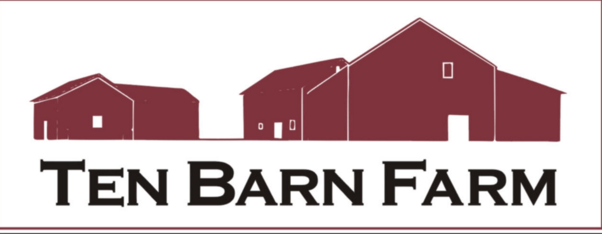The ridge over Fitting Creek
This farm was once much larger—probably up the long hillside, over Fitting Creek and passed the ridge. You certainly don’t need this many buildings for the ten acres we now own. Scale is key in farming. You need to either be big so you can maximize the value of all the equipment you need, or quite small to keep your overhead tightly in check. And then if you embrace organic and sustainable practices, that adds a complicating variable into the economic calculus because if you don’t use weed and pest eradication products, you are adding labor costs. Small scale organic farms produce marvelous, nutrient-rich food, but they are not the most reliable path to economic viability. Most small farms fail in the first five years.
Did you know that peas or tomatoes grown under the natural conditions here at Ten Barn Farm can be up to 4x’s as nutritious as the ones you buy at the grocery store? (And those tomatoes are likely harvested by workers not making a living wage and have traveled many more miles to reach your table.) Everyone makes their purchasing decisions based on resources as well as nutritional and sustainability concerns, but it is worth pausing when you have the chance to buy sustainability-grown peas at the farmers’ market that are 25% more expensive than the pre-packaged ones at the grocery store; that nutrient-rich food has added value in terms of your health and happiness. When you are there at the market with the farmer pondering what to buy, consider that you are talking to the person who grew the produce and that those vegetables were not produced on some mono-culture, industrial farm that often degrades the earth in so many ways. One way to think about it is you can pay now for healthier food and a healthier environment or pay later……
Peter in his normal pose among his veggies.
I know that for Peter, contributing to the health and well-being of our family, friends, and customers is the biggest motivation as he heads out for a day of weeding long rows, work that is more challenging than it might have been if he used weed and pest suppressants. So keeping the earth and the community healthy is part of the true job satisfaction for farmers, along with watching nature work and being your own boss. The other reason to use sustainable practices is so in 25 or 50 years these fields can still be producing for farmers not yet born. What do we, living on this historic farm, owe future generations? Did the farmers of the 18th, 19th or 20th centuries ponder that question? The beauty of the old family farm model is your interests and the interests of your great grandchildren are pretty perfectly aligned. You provide for your family today while preserving the integrity of the soil for future generations. But what happened to that last generation of farmers working this land fifty years ago? Did they think about their ecosystem differently knowing there was no one following in their footsteps? I would like to think they did not.
It has been a rough week for farmers in the Hudson Valley. Constant rain has most of our nicely headed-up cabbages in standing water needing to be harvested way too early or likely rot. Too bad we didn’t plant celery or rice, crops that can deal with fields of mud. It is not just farmers we need to consider when we think about climate change, but certainly farmers are living with the impact earlier and differently than those in non-agricultural industries. Farmers all over the world are dealing with climate change this season as they consider enhanced irrigation or dry farming in the west, new crop rotations across the growing season, and the inevitably of a growing number of damaging storms. A lot of challenges for modest pay, but the reward of sharing the taste of those first young peas in late May with customers or bringing the makings of the freshest possible dinner into your family kitchen each night is hard to put a price on.
The old draft horse stall





